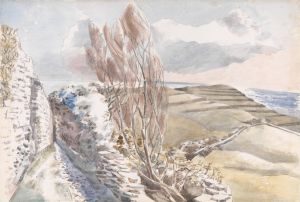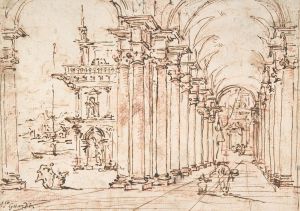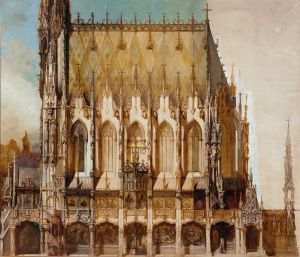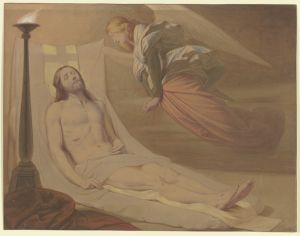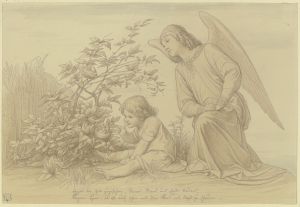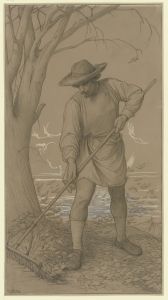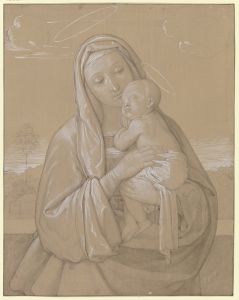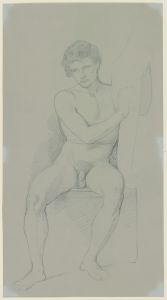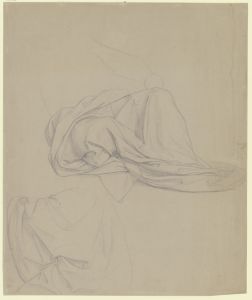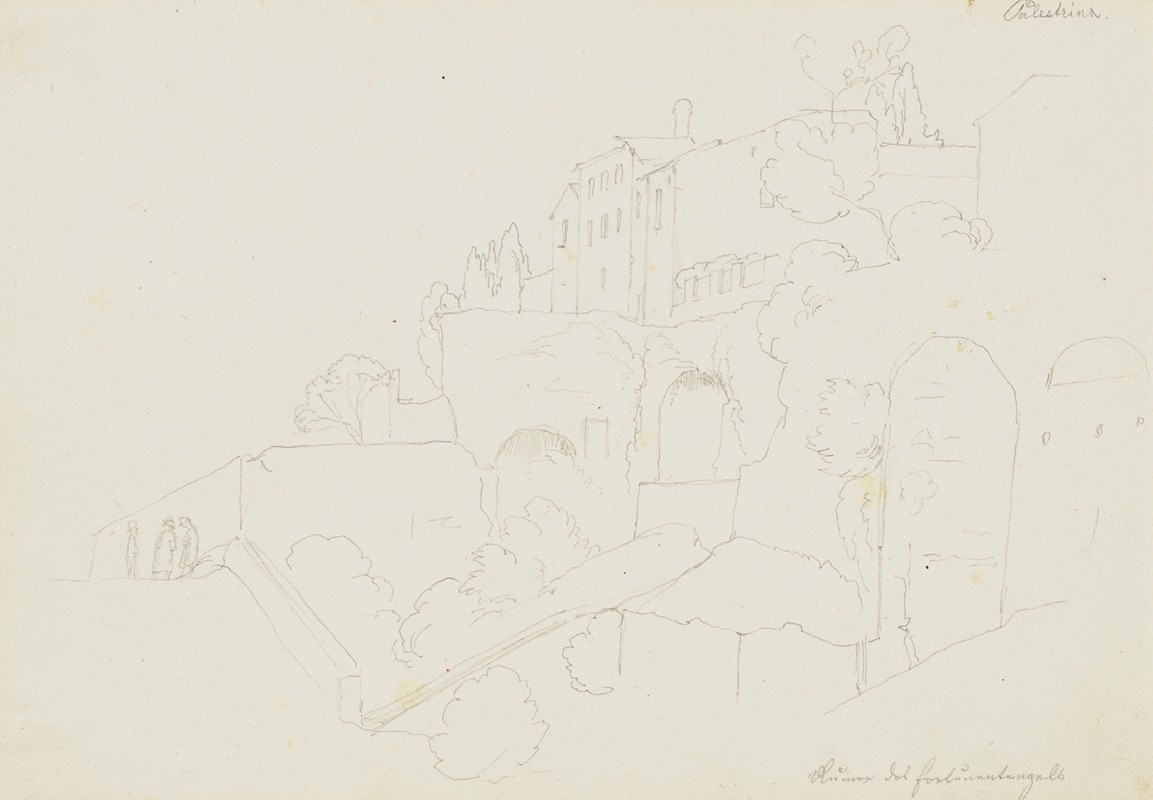
Ruinen des Fortunatempels in Palestrina
A hand-painted replica of Eduard von Steinle’s masterpiece Ruinen des Fortunatempels in Palestrina, meticulously crafted by professional artists to capture the true essence of the original. Each piece is created with museum-quality canvas and rare mineral pigments, carefully painted by experienced artists with delicate brushstrokes and rich, layered colors to perfectly recreate the texture of the original artwork. Unlike machine-printed reproductions, this hand-painted version brings the painting to life, infused with the artist’s emotions and skill in every stroke. Whether for personal collection or home decoration, it instantly elevates the artistic atmosphere of any space.
Eduard von Steinle was a notable German painter associated with the Nazarene movement, which sought to revive honesty and spirituality in Christian art. One of his works, "Ruinen des Fortunatempels in Palestrina" (Ruins of the Temple of Fortuna in Palestrina), captures the remnants of an ancient Roman temple dedicated to the goddess Fortuna, located in the town of Palestrina, Italy.
The Temple of Fortuna Primigenia in Palestrina, originally known as Praeneste, was a significant religious site in ancient Rome. It was constructed during the late Roman Republic period, around the 2nd century BCE. The temple complex was renowned for its grandeur and architectural sophistication, featuring a series of terraces, porticos, and grand staircases that ascended the hillside, culminating in a sanctuary at the top. The site was dedicated to Fortuna Primigenia, the goddess of fortune and fate, and was a major pilgrimage destination for those seeking divine favor and prophecy.
Eduard von Steinle's painting, created in the 19th century, reflects the romantic fascination with classical antiquity and the picturesque decay of ancient ruins. The artwork depicts the temple ruins amidst a serene and evocative landscape, emphasizing the contrast between the enduring beauty of nature and the transience of human constructions. Steinle's attention to detail and his ability to capture the atmospheric effects of light and shadow contribute to the painting's evocative quality.
Steinle was born on July 2, 1810, in Vienna, Austria, and studied at the Academy of Fine Arts in Vienna. He later moved to Rome, where he became associated with the Nazarene movement, a group of artists who sought to revive the spiritual and artistic values of the early Renaissance. The Nazarenes were known for their meticulous technique, use of clear, bright colors, and emphasis on religious and historical themes. Steinle's work often reflected these principles, and he became known for his religious paintings, frescoes, and illustrations.
"Ruinen des Fortunatempels in Palestrina" is a testament to Steinle's skill in landscape painting and his ability to imbue historical subjects with a sense of timelessness and reverence. The painting not only captures the physical remnants of the ancient temple but also evokes a sense of contemplation and reflection on the passage of time and the enduring legacy of human culture.
Steinle's work, including this painting, contributed to the broader 19th-century European interest in classical antiquity and the romanticization of ruins. This interest was part of a larger cultural movement that sought to connect with the past and find inspiration in the artistic and architectural achievements of ancient civilizations.
Eduard von Steinle passed away on September 19, 1886, in Frankfurt am Main, Germany. His legacy as an artist is marked by his contributions to the Nazarene movement and his ability to capture the spiritual and historical essence of his subjects. "Ruinen des Fortunatempels in Palestrina" remains an important example of his work and a reflection of the 19th-century fascination with the ruins of the ancient world.





